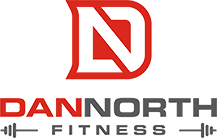
How to Warm-Up for Any Workout
You don’t truly appreciate how important warming up is until you do it properly and feel firsthand what a difference it makes in your training.
The problem is most people skip their warm-ups entirely and push them aside like a bowl of steamed Brussels sprouts.
A quick story…
I started lifting weights in high school when I was 14. I would get to the gym, walk right past the stretching area, and immediately start lifting.
My thought process was, “I haven’t done anything yet and I have lots of energy, so I should be able to lift the heaviest weights right now.”
I’ve come a long way. But many people still have this mindset and don’t give their warm-ups the attention they deserve.
Why should you warm-up?
An effective warm-up enhances physical and mental preparation, while maximizing your performance and minimizing your risk of injury.
Basically, it makes shit better. A lot better.
How do you warm-up?
As with many other training-related questions, the answer isn’t a “one size fits all” prescription. Your warm-up is going to be unique to you and your training goals.
But…
There is a simple (but super effective) step by step process you can go through during your warm-ups to get the most out of them.
Note: This isn’t the only way to warm-up. This is simply what I’ve found (so far) to be very effective for the majority of my clients.
5 STEPS TO WARMING UP FOR ANY WORKOUT
1. WALK
This has less to do with any physical benefits and more to do with mental preparation.
Training is tough shit, and in order to get the most out of it, you gotta be mentally engaged.
The last thing you want to do is stumble into the gym with all of life’s stresses clogging your mind before jumping straight into your workout.
Give yourself a few minutes to forget about all that and zone in on your training.
You can walk, bike, go on the elliptical…basically any low impact cardio of your choosing.
2. FOAM ROLLING
Foam rolling or soft tissue work (ex. lacrosse balls or medicine balls) helps alleviate tension in your muscles, improves blood flow, and increases your body’s core temperature.
It’s kind of like giving yourself a (very uncomfortable) massage.
In addition to the above benefits, starting your workout with some soft tissue work helps prime your muscles for loading. As Mike Boyle puts it, if you think of your muscles as a rubber band with a knot in the middle, foam rolling helps “untie” that knot.
3. MOBILITY WORK
Mobility is your joints’ ability to move through their intended ranges of motion (a simple way of putting it is active flexibility with control).
Doing some mobility work before training will reduce your risk of injury and allow you to perform exercises with better technique and positioning.
At the end of the day, if your joints aren’t mobile enough to get into a good position (whether it’s squats or whatever), you’re not going to be able to perform the exercises you love as efficiently and safely as possible.

4. CORE ENGAGEMENT
Your core is everything. It’s your base, your center of gravity, and where all of your strength and power stems from.
Regardless of what kind of workout you’re doing, you’ll be incorporating your core to some degree. Whether it’s bracing for heavy squats or deadlifts, or doing some conditioning on the turf, your core is going to be working.
Incorporate dead bugs, birddogs and other core engagement drills into your warm-up for better balance, coordination, and strength potential.
5. EXPLOSIVE STUFF
No, I don’t mean blowing up your gym. I’m talking about exercises that stimulate your nervous system (CNS = central nervous system).
Your central nervous system (CNS) consists of your brain and spinal cord, and controls all the cognitive functions of your body.
In other words: Your CNS tells your body what to do and when to do it.
You can perform dynamic/explosive exercises to “heighten” your CNS during your warm-up to maximize your strength and power potential. Because the faster the weight moves, the stronger the lift is going to be.
Usually it’s a good idea to use dynamic exercises that closely mimic the movement pattern that’s going to be involved in the workout.
For example:
- Box jumps before squats
- Explosive push-ups before bench press
- Heavy kettlebell swings before deadlifts
- Med ball slams before presses
- Overhead med ball toss before pulls
Considerations for dynamic/explosive exercises:
- 1-5 reps for 3-5 sets is plenty. Explosive movements like box jumps and med ball tosses are meant to be explosive. You can’t be explosive if you’re doing 20+ reps of something. Keep the reps low and focus on producing as much force as possible each rep.
- Rest 2 min (minimum) between sets. These exercises are taxing both on the body and the nervous system, when done correctly.
- Focus on quality over quantity. Don’t go to fatigue or failure and perform high quality reps.
SUMMARY
As with most things in the fitness/training world, no solution is the “best” solution for everyone. The “best” warm-up is the one you can do that is specific to you and your workout.
Use this as a guideline when constructing your own warm-up routines!




